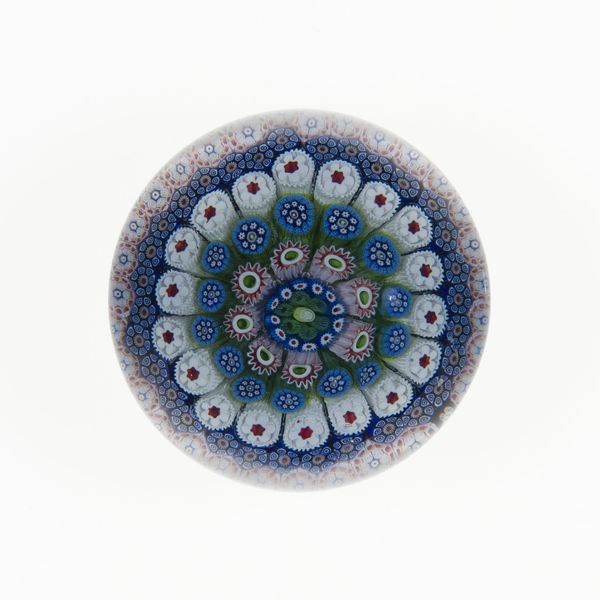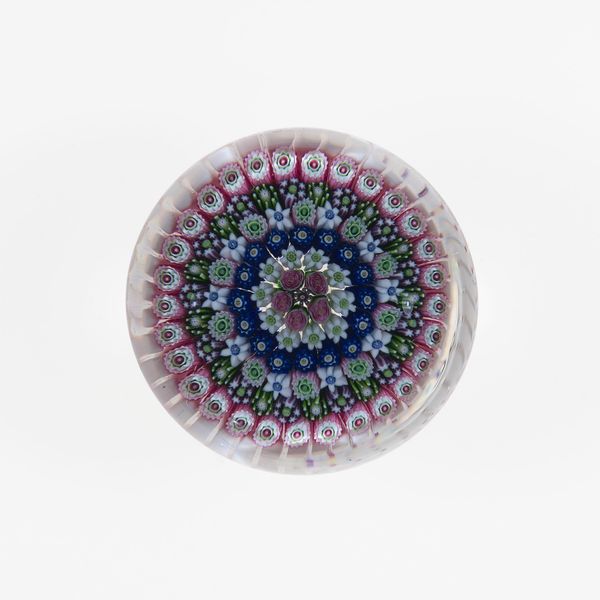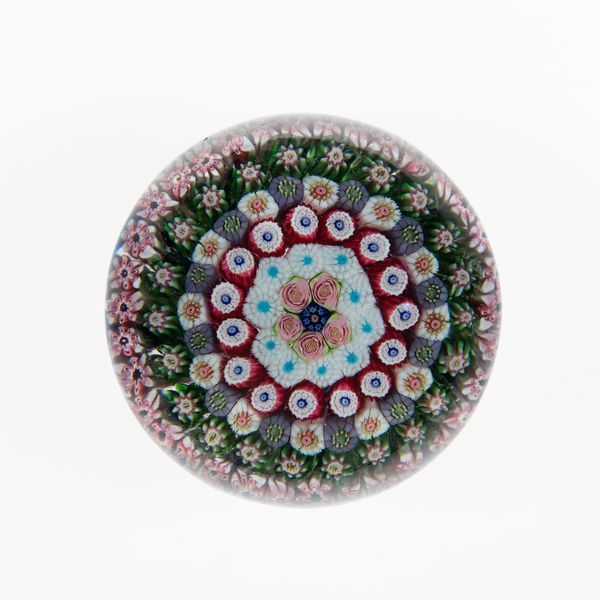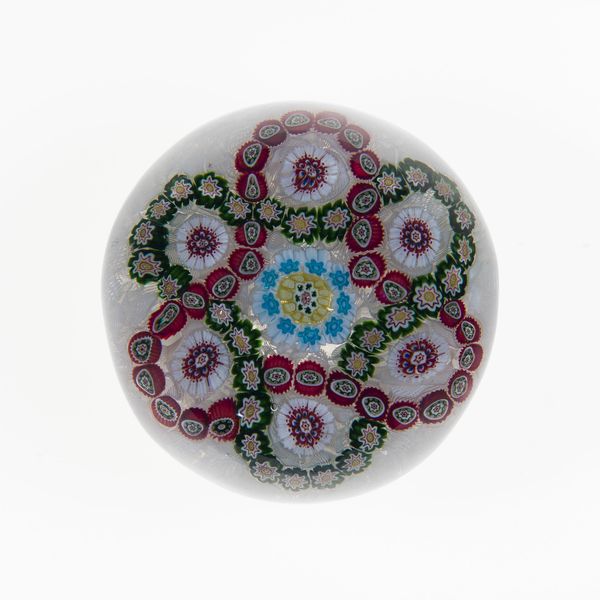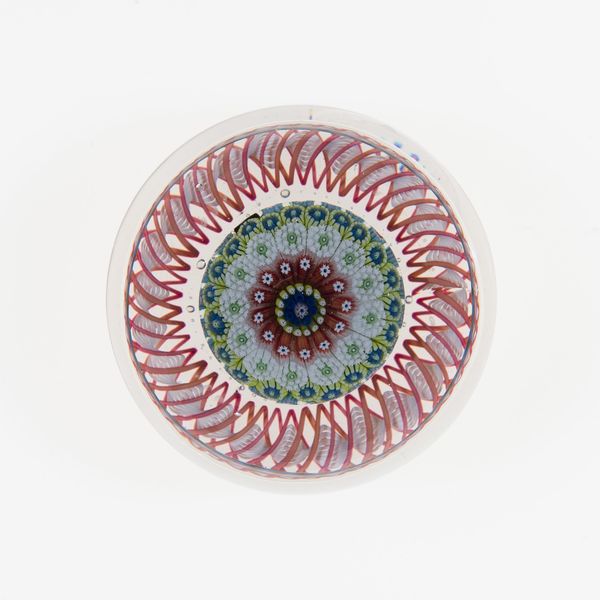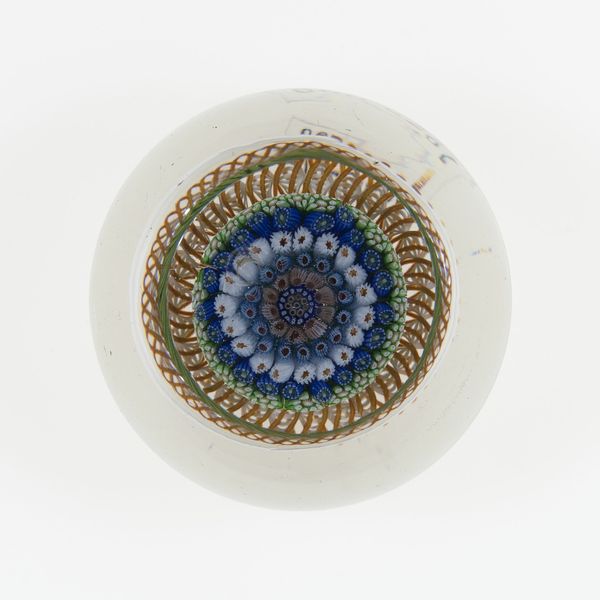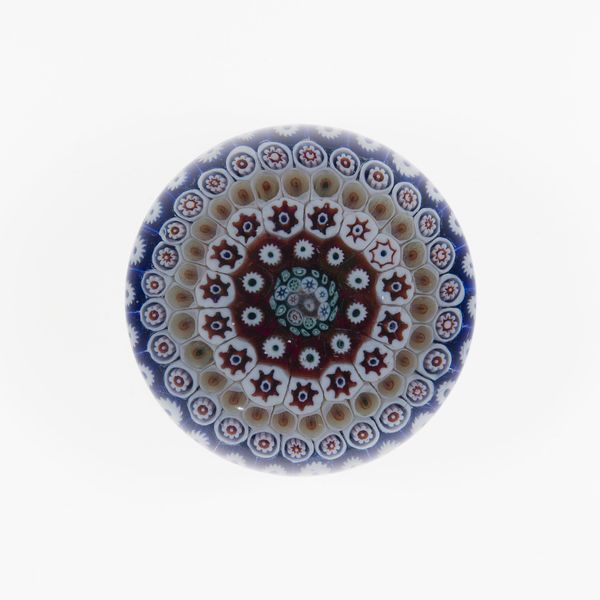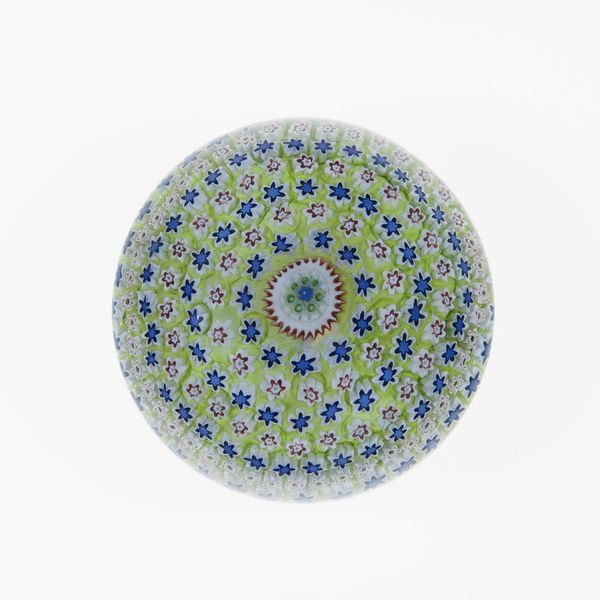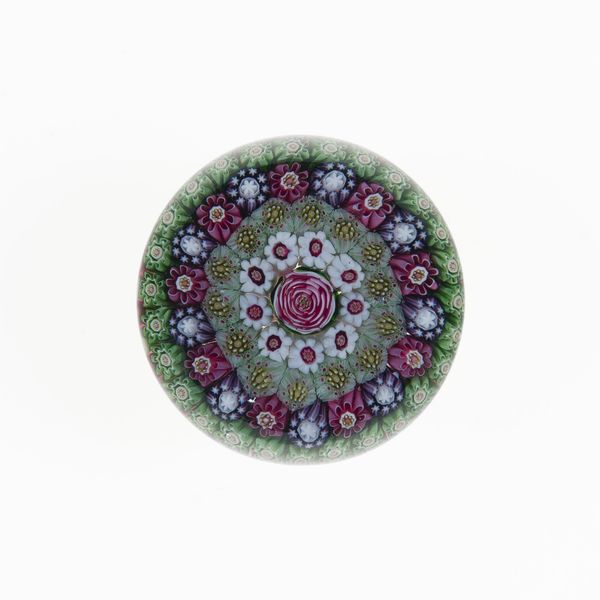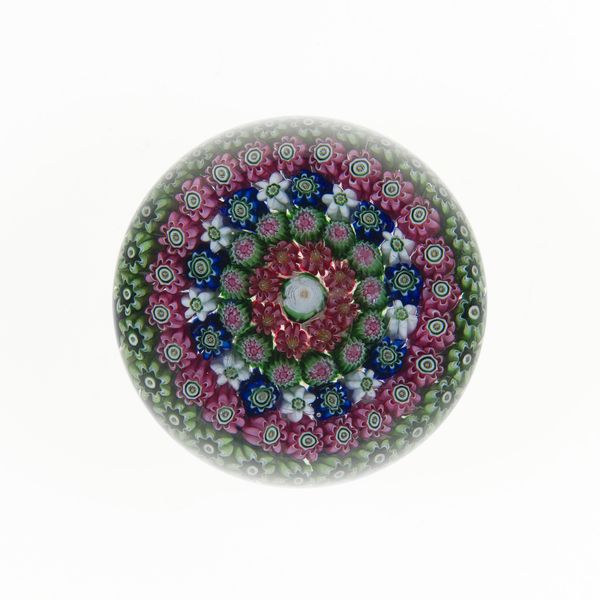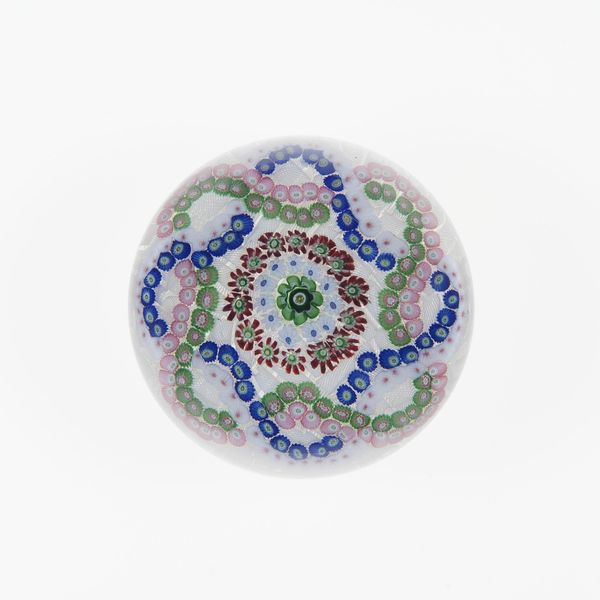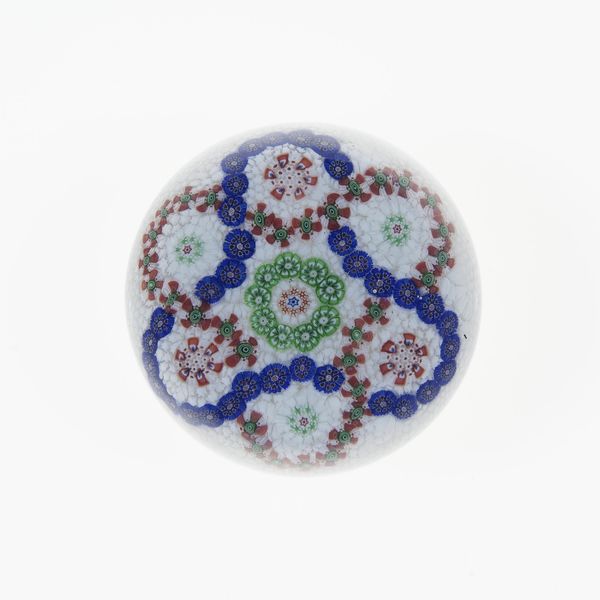
glass
#
glass
Dimensions: H. 6.6 cm (2 3/8 in.) Diam. 8.6 cm (3 3/16 in.)
Copyright: Public Domain
Editor: Here we have "Paperweight" made in 1848 by the Compagnie de Saint Louis, residing here at the Art Institute of Chicago. The use of glass and paper creates such an alluring floral design that’s hard to miss. What can you tell me about it? Curator: Notice how the arrangement of millefiori canes encapsulates labor-intensive processes. Each tiny floral motif, made individually from glass, speaks to a factory setting and the hands of artisans. What does its original purpose as a "paperweight" suggest about bourgeois consumption and status during the Industrial Revolution? Editor: So, this wasn’t just an object for holding papers but a symbol of class, wealth and a testament to labor during that era. But is there anything else that stands out? Curator: Reflect on the material contradiction. Delicate glass, yet a weighty item suggesting authority and permanence. Its transparent nature further invites the beholder to literally and figuratively "see through" its purpose to consider the glass making industry that helped make the art object. Consider the historical moment. The rise of industrialization allows a collective of creators and consumers alike to experience artistic craft in a domestic context. How do those relationships play out here? Editor: I see your point about the contrast. Looking at it through the lens of industrialization and consumption shifts my view quite a bit. Curator: Exactly. It's about the convergence of artistry, industry, and consumer culture. Editor: It really changes how I think about decorative arts in general. I'm not just looking at an aesthetic object, but at all the labor and economic conditions that allowed its existence. Curator: Indeed! Understanding the material conditions allows one to see objects as embedded and relational rather than autonomous.
Comments
No comments
Be the first to comment and join the conversation on the ultimate creative platform.
